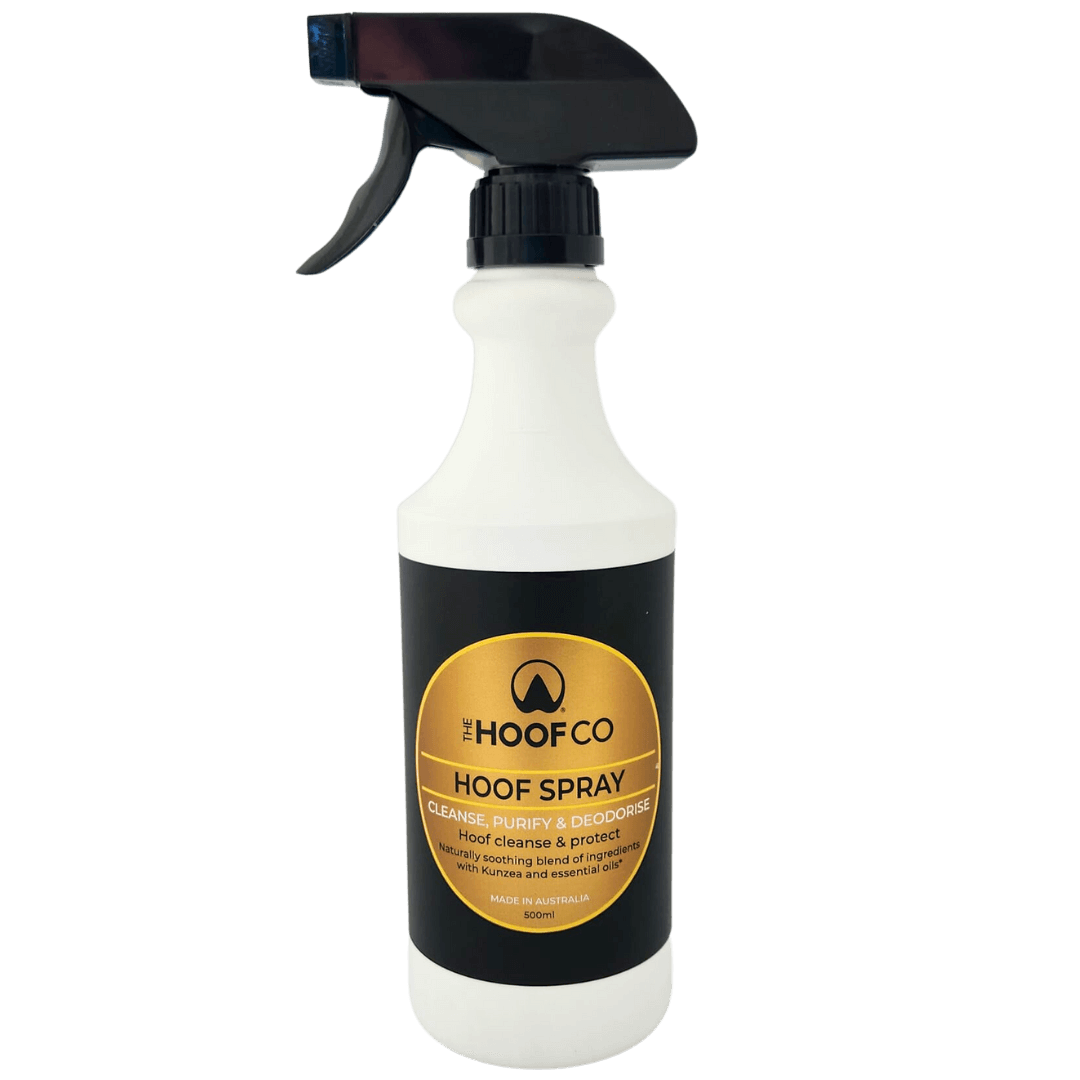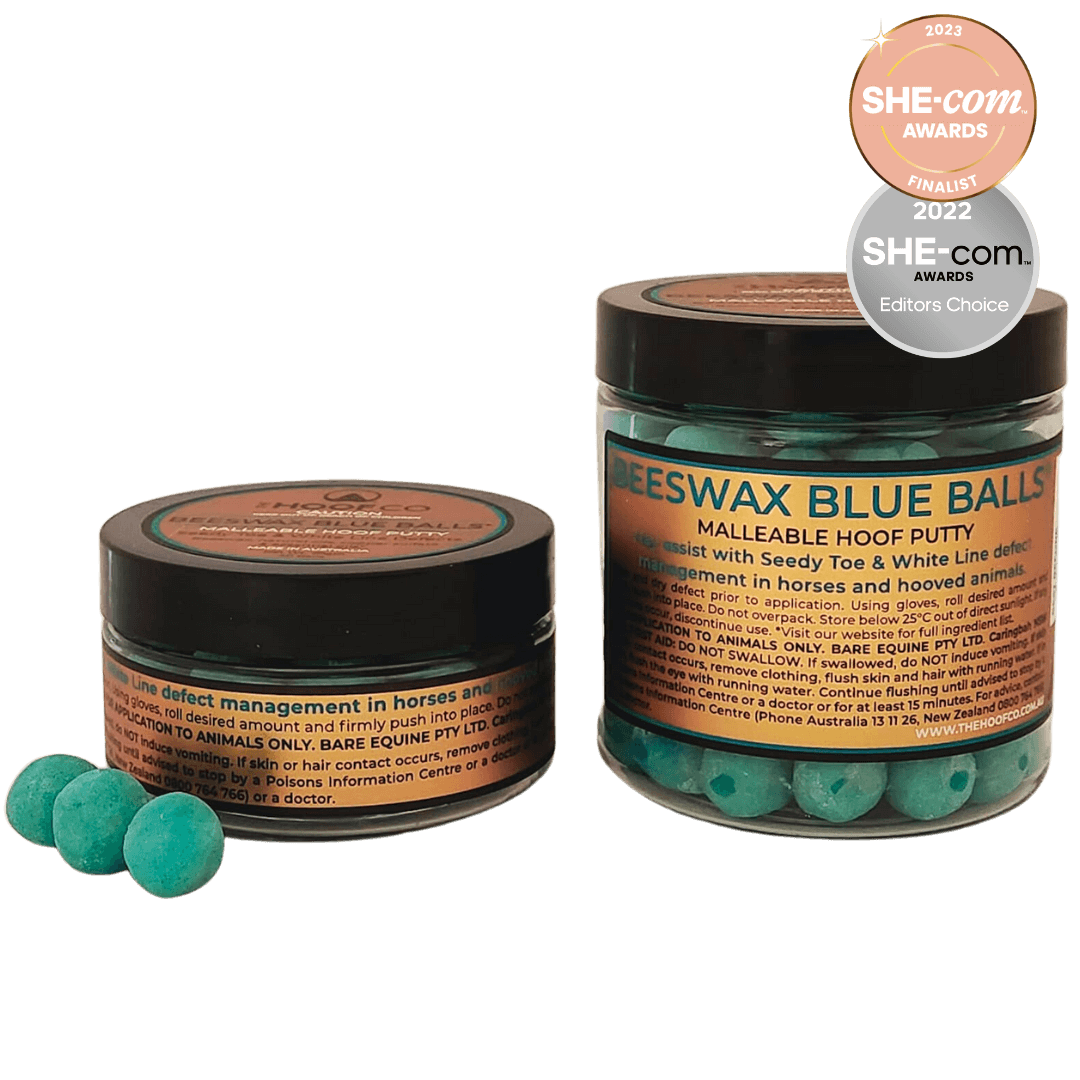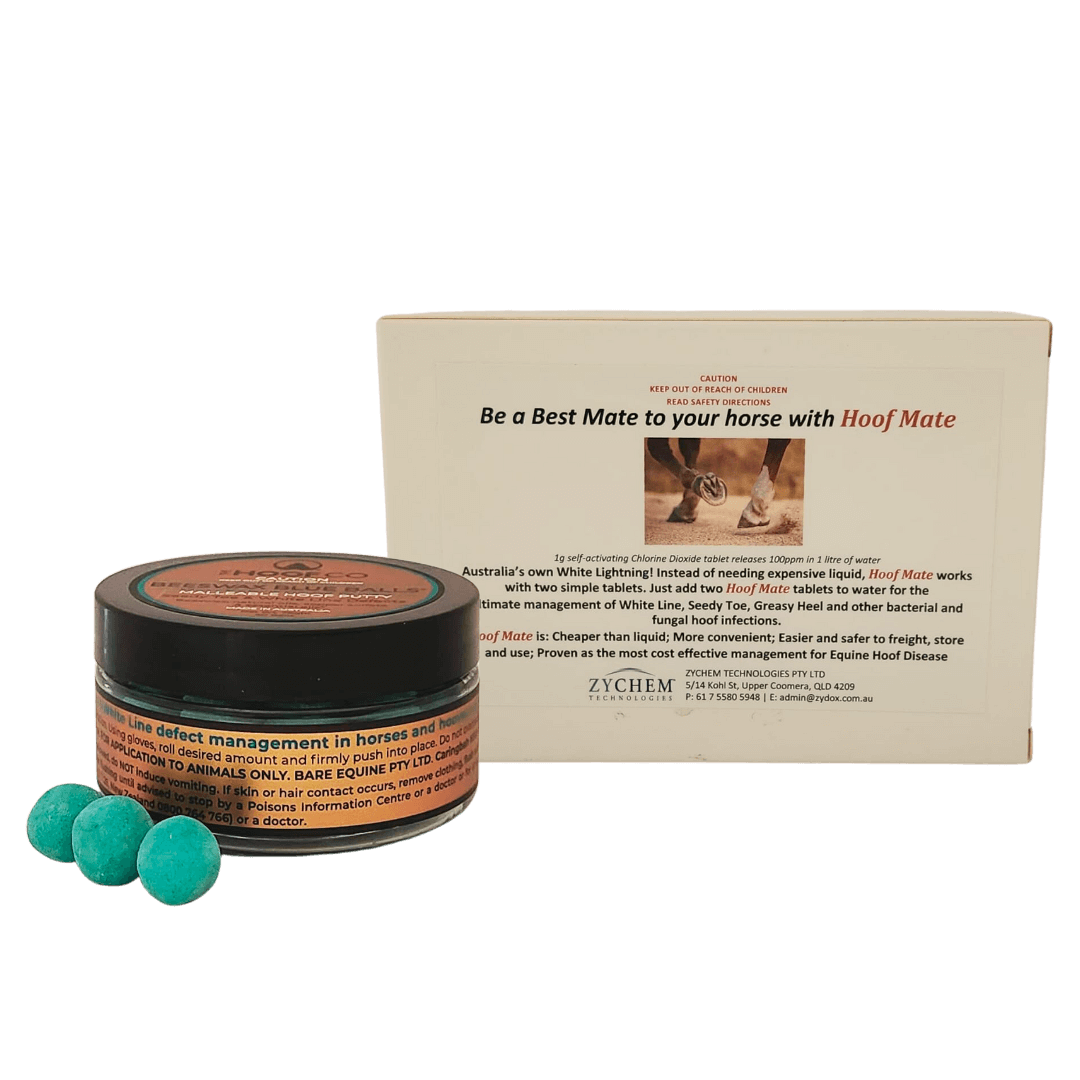White Line Disease
WHAT IS WHITE LINE DISEASE?
White line disease is actually an invasion of pathogen, not a disease. It doesn't just thrive within the "white line" but also within the stratum internum (inner hoof wall) as well.

What steps should I take to help my horse?
ADDRESS THE CAUSE
The pathogens that thrive within White line disease (or Seedy toe gone wild) love an anaerobic environment. They usually enter through a deviation in the white line and start their feast. Yep, you can think of it as a pathogen party.
A tight trim cycle with a hoof care professional will usually have them addressing any small deviations before they run wild. A flare in the hoof, stretched laminar, a small hole, unhygienic conditions, hoof distortion etc can all play a part in their invasion. Addressing the cause of any of these factors (including a low sugar and starch diet) will help reduce the chances of your horse suffering a white line invasion.
HOOF HYGIENE
Horses are hard work. For such big strong animals, they really are complex and its our job as owners to play a vital role in attending to their hoof hygiene daily. At the very least, you should be picking hooves daily and looking for any signs of "hoof funk". After hoof picking, we suggest a quick squirt of our HOOF SPRAY daily for an extra cleanse. Pay attention to upcoming weather conditions which may see you adding some further protection for avoiding or managing hoof conditions through those challenging events.
Standing around in unhygienic or waterlogged areas of a paddock will make the horse more susceptible to hoof problems if they do not have a dry and hygienic area to get onto.
If your horse has indications of white line disease starting to progress, we recommend you address this asap. Our go to for this is our combo pack of HOOF MATE soaking tablets and our BEESWAX BLUE BALLS which can be found here.
If your horses white line disease has progressed further up into the hoof wall, this is a job for a hoof care professional experienced in resections. Yes, sometimes your Hoof Care professional may be hesitant to resect, but it is vital to have these pockets opened up to reduce the anerobic environment and to allow access for topical applications.
As always, this advice is never intended to replace veterinary advice and we always recommend contacting your vet as a first point of call.





